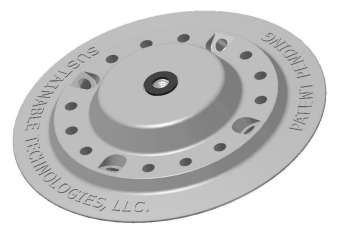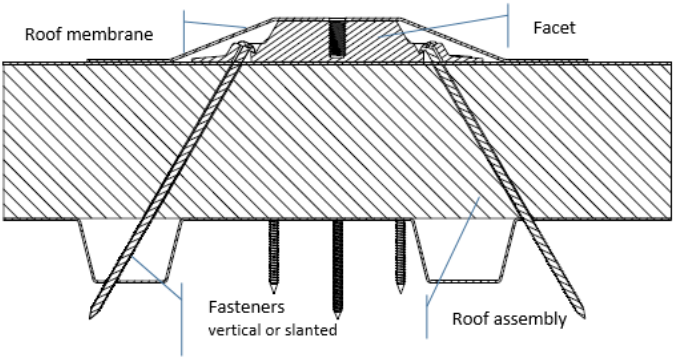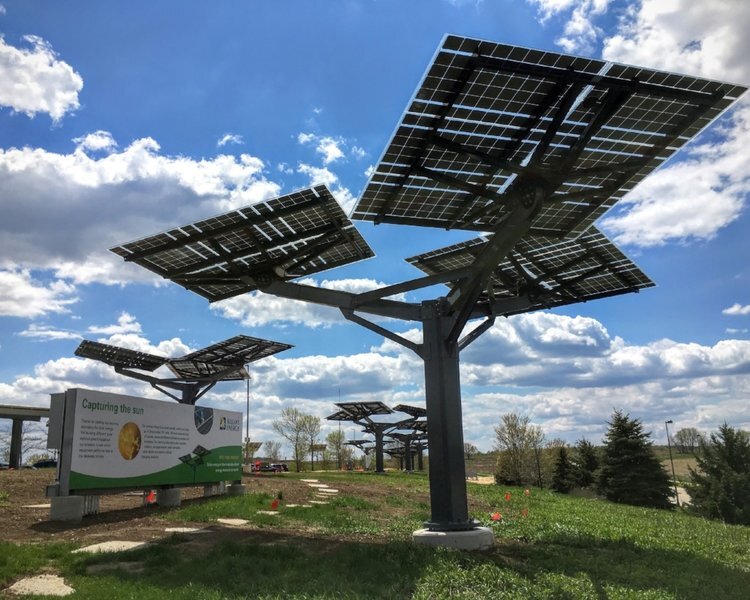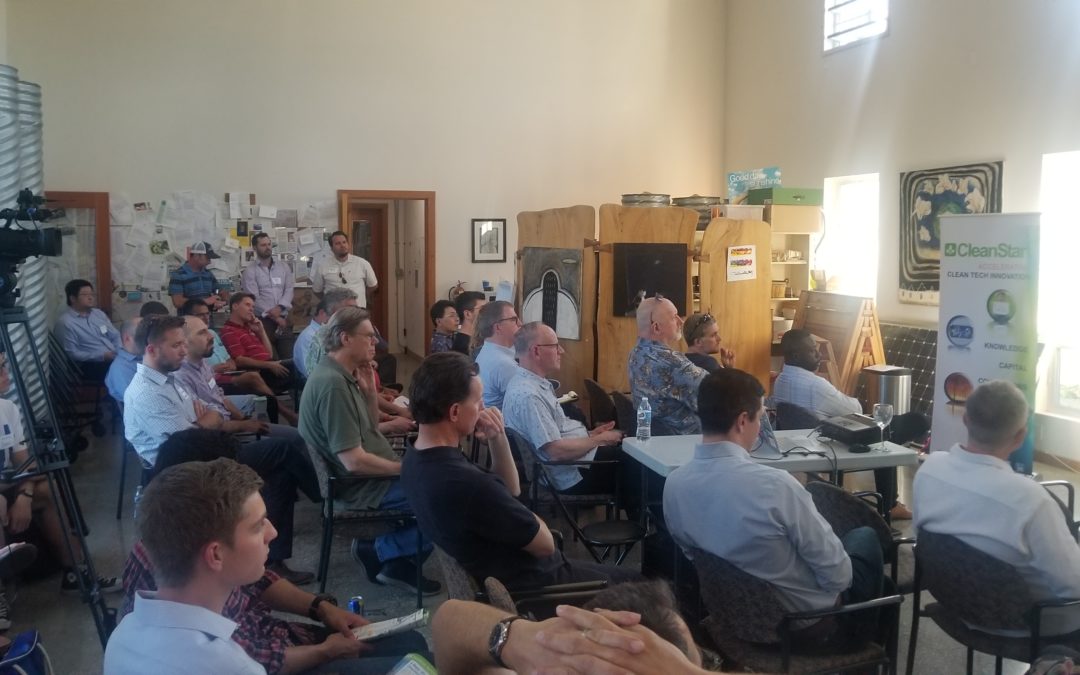
Packed Crowd Hears about Rising Stars of Solar
It was standing room only on December 5 at our last MeetUp of the year. The theme centered on some new products in solar—our regional “Rising Stars”. First was Erica Lindstrom of Sustainable Technologies with their Facet product, a clever anchoring system to put PV racks on flat roofs on commercial buildings without causing leaks. Since over 80% of the cost of rooftop solar is in the racking, labor and power electronics, Facet is cutting costs where it counts the most. It may not be obvious, but putting PV panels on a commercial building roof is not so easy. Usually the racks are just laid on the roof and ballasted with concrete blocks to prevent them from moving, or a system must be engineered to anchor where there are beams underneath one can bolt into. Using Facet reduces this part of the installation cost by 40-50% and provides more assurance that the roof remains leakproof. Erica Lindstrom said the Facet anchors are catching on rapidly, and being approved by more and more building departments, leading to rapid growth. Facet was a runner up in the recent regional Sustainability Innovation Awards. We have profiled them in another blog.
Second up was Kevin Logue with Spotlight Solar. His product is a “solar tree”. It is a mounting system for putting panels on “branches” off a central “trunk”. The result provides shade, a placed to sit and USB outlets for charging as well as 115 V AC outlets. A typical installation provides 3.6 kW of power. It is not as economical as a ground mount or roof top solar, but that is not the point. The idea is to make people more aware of solar PV and use it in parks and plazas. It is as much a piece of art as a power generator. Kevin is based in Fair Oaks as the West Coast salesman for Spotlight based in North Carolina. He already has several projects underway in the area, some funded in part by SMUD. As a part of their approach, they train local workers to install these systems. They are looking for more sites.
Then Al Rich of ACR Solar presenting his innovation the MegaMat. Al has been in the solar business for 45+ years. He got his start in selling solar thermal systems when PV was too expensive. Now he does both kinds of installations since PV became economic. But his real passion is for collecting the heat from the PV panel so that two products are harvested from the same area of sunshine. His MegaMat is attached to the back of a PV panel and circulates water. The water gets hot and the panel gets cooled so that it actually puts out more electricity. Heat is the enemy of PV efficiency. On a hot summer day, the PV panel may reach 150° F. The MegaMat could lower that temp by 40°. As a rule of thumb, PV panel output decreases by about 0.25% for every degree F above 77°F, so dropping the temp by 40°F would add 10% to the output. The MegaMat is composed of an extruded high-density polymer with a lifetime of 50 years in direct sun. Since it installs under the PV panel, lifetime should be better. Al has the MegaMat on a test home now to confirm the concept.

Al Rich shares his ACR Solar experience and MegaMat
These were really unique presentations, and demonstrated how diverse our solar clean tech companies are in the region. Our next MeetUp is planned for the third week in January. Keep a watch for the announcement.

ABOUT THE AUTHOR
Gary Simon is the Chair of CleanStarts Board. A seasoned energy executive and entrepreneur with 45 years of experience in business, government, and non-profits.
CleanStart Sponsors
Weintraub | Tobin, EY, Stoel Rives, Greenberg Traurig LLP
BlueTech Valley, Buchalter, Moss Adams, PowerSoft.biz
College of Engineering & Computer Science at Sacramento State
Follow us on Social Media to keep upto date!








